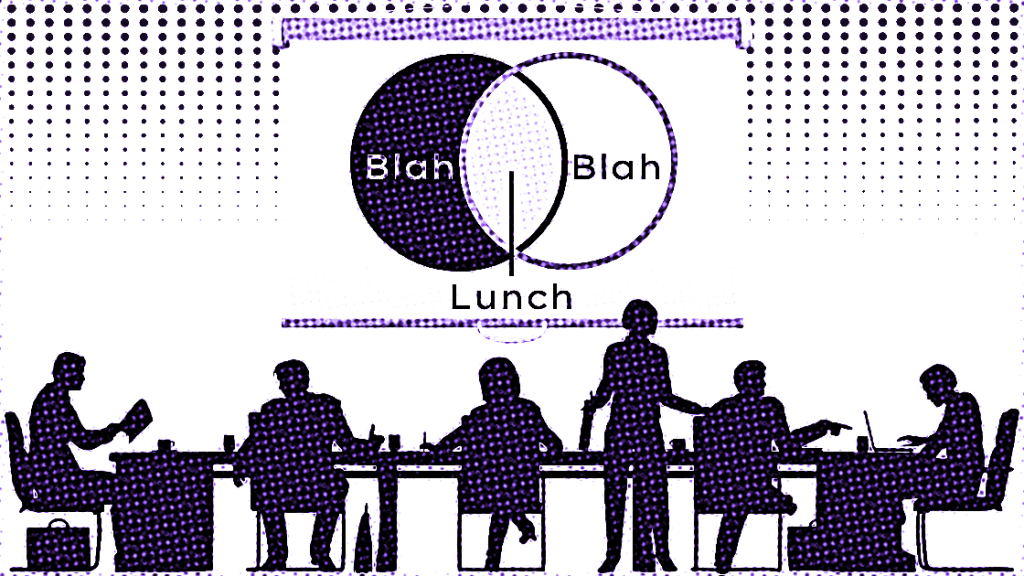
Do you ever wonder how much communication has deteriorated despite the growth in communication channels and tools? It seems as our communication channels increased, the quality and thoughtfulness of our communication suffered.
So today I want to talk about how you get your message across, incite a response, build trust and communicate effectively with small, actionable changes.
? You can listen to this content in the related audio version in this Bookboon Expert Talk, “3 Common Communication Mistakes”.
Communication Style No.1: Ambiguity
The first hurdle to overcome is ambiguity. This happens when leaders make the mistake of assuming clarity and forgo the step of establishing clarity in their interactions.
When we don’t invest in clarity, we reap inefficiencies. Share on XIt can be easy to blame a team for its failure to meet expectations. It is more effective to get to the root of those missed expectations: A simple way to create greater clarity is to remove room for misunderstandings upfront. You can do this by asking your team to revert back to you what their understanding is by stating their key takeaways.
Don’t write this off because it sounds too simple or assumes that the amount of thought you put into your preparation will be enough to ensure everyone’s understanding. When we don’t invest in clarity, we reap inefficiencies.
So, what’s the solution here?
Approach No.1: Establish Clarity First
If you want to see great results, communicate beyond your vision and goals for the team. Include your expectations about how you expect your team to work in a virtual environment.
There are some questions you and your team should all be aligned on, for example:
- What communication channels do you agree to use and for what purpose?
- How quickly do you expect responses to emails? How frequently should your team access communication, let’s say on your Slack or Teams channel?
- What do you consider to be core working hours for collaborative work? You may want to establish a clear understanding of which part of the day or week needs to be kept available for collaborative work. This will in turn free your team up to flexibly schedule the remaining time around those core hours for focus work.
Do you have the same understanding? In which of these areas do you need to establish clarity?
Communication Style No. 2: Stealth Appreciation
The second example is about a missed opportunity for appreciation. You may appreciate your team, but they won’t know unless you communicate it effectively. But first, let’s look at how the absence of appreciation hurts your team’s productivity.
In an executive roundtable about the topic of the Great Resignation, we’ve discussed how organizations can stop the bleeding and create the incentives that the “quitters” are looking for.
During our event, we shared what resigning employees are looking for. Among the things employees want are better flexibility and better pay, but one dominant item on the list had more weight than pay: It turns out employees want work that is fulfilling.
A large part of that fulfillment comes from being rewarded in more ways than financially. And as the numbers show, employees who feel valued perform better. And as a study from WorkHuman shows, employees that are being shown appreciation with a simple Thank You are 49% less likely to resign. What a difference appreciation makes!
Of course, that’s not the only way to appreciate good work. Rewards are another factor.
Now, in the traditional office environment, appreciation in form of rewards for performance includes visible perks. Those perks were created by a world built around the office. One example includes the infamous corner office, but also office equipment, office perks like an onsite gym, parking privileges, and so forth.
What do you do in a virtual world to reward good work in a meaningful way?
Approach No. 2: Empathetic and Meaningful Rewards
Just as the rewards in the traditional office were invented to match its environment, the new virtual, remote work environment gives us an opportunity to get creative!
Here are some ideas for meaningful rewards:
- You can still create public, visible acknowledgment by creating personalized, digital award backdrops or frames to use during video conferences where you honor outstanding performance.
- You can offer home-office upgrades as a reward. This can make a big difference. For example, you can reward employees with an allowance to spend on upgrades like convertible desks or room partitions so they have more dedicated office space.
- How about showing your support for causes that matter to employees by offering to donate to a charity of their choice?

I do want to mention another item that will show appreciation and will make a difference: This is the use of empathy and the intentional show of care. To be intentional in your appreciation of employees, set time aside in your day for a personal connection with coworkers, even for virtual interactions.
Make it a point to acknowledge hard work, say thank you, and reserve time to find out what challenges your team is facing at work, but also outside of work.
Communication Style No. 3: Unstructured Relay
The third style hurdle to overcome is complexity. We are all overwhelmed. There is too much going on. To get through, you have to find the right channel, and masterfully craft your message so you find listeners and readers. And that’s not enough – you may have to repeat your message through several avenues and filter complexity and being easy-to-digest structure into your message.
I would have written a shorter letter, but I did not have the time. — Mark Twain
If you don’t get a response or if what you communicated does not incite the action you have expected, you need to adjust your communication.
One of the things that people do when they are overwhelmed or are not getting a response is to reduce communication. This kind of withdrawal has the opposite effect you intend to have.
Instead of simplifying things, you are creating distance and mistrust when you withdraw from communication. Your team wants to hear from you, but your approach needs to shift.
Approach No. 3: Radical Simplicity
As mentioned earlier, you have to come to an agreement on which communication channels you expect your team to use and when.
On top of that, you can shift your communication style to provide a clear pattern that people can easily follow. Borrow your approach from top marketers: Big companies know you have developed the so-called “ad blindness.” So, what do they do? They still communicate using a variety of channels to get your attention.
You are creating distance and mistrust when you withdraw from communication. Your team wants to hear from you, but your approach needs to shift if you want different responses. Share on XOf course, you do not bombard your team with repeat messages on every channel. But, just like marketers, you can adapt to your audience. Train yourself to include three elements in everything you communicate – verbally or written: the challenge, the action, and the result or goal (CAR).
Use the CAR as the vehicle or mechanism to quickly convey a message that incites action. The acronym helps you to stay focused in your communication – whether in writing or in ad hoc verbal communication.
A CAR Communication Style Example
For example, you state that a large number of customers have made you aware of a malfunction in your product. That’s a challenge. Now you need your team to run an analysis and investigate the cause of this malfunction. That’s the action required. You need a report within the next 4 hours to make a decision. That’s the goal (result). And just like that, in a few short sentences, you have stated the key takeaway and prompted action.
With a simple shift like this, you have reduced complexity and communicated with clarity. Using this method will help you to get to the point quickly – an asset in a world where the attention span has been reduced to the length of a tweet.
Conclusion
To sum it up, clarity, appreciation, and simplicity with consistency in your communication will help you to avoid three common communication hurdles when working remotely. They require a little creativity, retraining of your habits, and being intentional. The reward is greater trust and employee satisfaction.
To read more about this, take a look at the book, High-Performance Virtual Work: How Leaders Create Effective Virtual Workplaces.
Before you go, connect with me here on LinkedIn and share your feedback. Is there a topic you would like to hear more about?
Related Resources
- Listen to this related Expert Talk on Bookboon: “3 Common Communication Mistakes That Affect Your Team’s Productivity (And Talent Pool)” (10 min)
- The Great Resignation Executive Talk – How Do We Give Employees What They (Really) Want?
- Cool office backdrops that also work as partitions (Anyvoo)
LC#021
